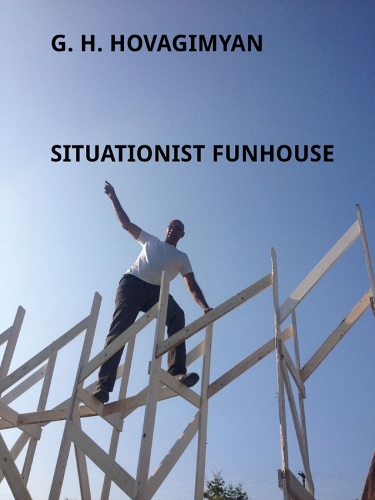
G. H. Hovagimyan: Situationist Funhouse
(Paperback)
Publishing Details
G. H. Hovagimyan: Situationist Funhouse
By (Author) Stephen Zacks
Oro Editions
Oro Editions
10th June 2022
United States
Classifications
General
Non Fiction
History of art
Digital, video and new media arts
709.2
Physical Properties
Paperback
208
Width 177mm, Height 228mm
456g
Description
G.H. Hovagimyan is an absurdist, a strategist, a serial collaborator, and nothing short of a cultural icon in the world of contemporary art, particularly as it relates to how artists have adopted the digital technological tools of our times, adapting them in his work for critique of art, popular culture, and social engagement.
Situationist Funhouse is a joyride through this history. The journey Stephen Zacks so meticulously documents and describes is not only an incredibly comprehensive ride through G.H.s life work to date Hovagimyan adopted G.H. as an acronym in the 1990s as a kind of gesture of personal rebirth and to ease others difficulty with his last name [pronounced ho-va-GIM-yan] it also serves as a document that tracks a particular view on the alternative contemporary art scene of New York from the 1970s to the present day.
Reviews
"While Stephen Zacks' new book, G.H. Hovagimyan: Situationist Funhouse, is ostensibly about the life and work of the artist, there's an intriguing and seemingly topical subtext looming in the background: the role of art and culture on the development and redevelopment of cities. It's a complicated and sometimes fraught issue, prone sometimes to simplistic, even binary thinking. Zacks, a friend and former colleague at Metropolis, has always had a more nuanced view of the issue. Last week I reached out to him to talk about the work of Hovagimyan, the historic lessons of 1970s New York, and why "gentrification" needs a new name." -- ArchDaily
Author Bio
Stephen Zacks is an advocacy journalist, architecture critic, urbanist, and organiser based in New York City. A graduate of Michigan State University and New School for Social Research with a bachelors degree in interdisciplinary humanities and a masters in liberal studies, he founded Flint Public Art Project in 2011 and serves as president of the nonprofit Amplifier Inc., which promotes new conceptual frameworks and proven strategies to influence public policy and improve local and global governance. He has been published in the New York Times, Village Voice, Art in America, Abitare, LArchitecture dAujourdhui, Dwell, the Architectural Review, Oculus, Landscape Architecture Magazine, Architectural Record, the Architects Newspaper, Brownstoner, Curbed, Monocle, Blueprint, Mic, Print, and Hyperallergic, and previously served as an editor at Metropolis. His projects have received awards from ArtPlace, Creative Capital, Warhol Foundation, National Endowment for the Arts, Graham Foundation, MacDowell Colony, and the New York State Council on the Arts.
